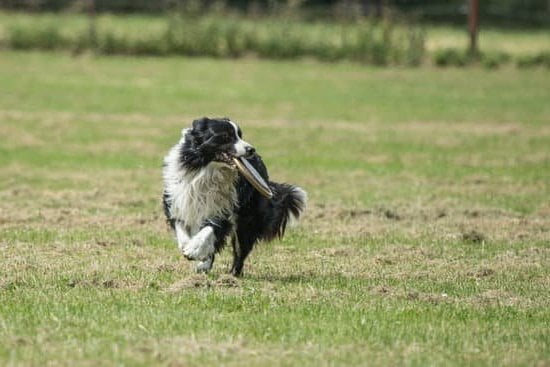Small dogs are incredibly popular pets, adored for their compact size and adorable personalities. However, one common issue that small dog owners face is the challenge of potty training. The question on many owners’ minds is: can small dogs be trained to use a litter box? In this article, we will delve into the concept of litter box training for small dogs and explore the various benefits and considerations associated with this alternative potty solution.
Training a small dog to use a litter box comes with its own set of pros and cons, which will be discussed in detail. Understanding these factors can help pet owners make an informed decision on whether litter box training is the right choice for their furry companions.
Additionally, we will explore the different types of litter box options available for small dogs, providing insights into the most suitable choices based on individual needs and preferences. From traditional to innovative designs, there is a range of options to consider when embarking on the journey of litter box training.
Throughout this article, we will also provide practical tips and advice on how to successfully train a small dog to use a litter box, as well as address common challenges that may arise during the training process. Whether you are considering litter box training for your small dog or simply curious about this alternative potty solution, this comprehensive guide aims to provide valuable insights for all pet owners seeking effective and convenient potty training methods for their beloved furry friends.
Pros and Cons of Training Small Dogs to Use a Litter Box
Pros
Training small dogs to use a litter box can have several advantages. First, it can be extremely convenient for pet owners who live in apartments or areas with limited outdoor space. It eliminates the need for regular trips outside, especially during bad weather or late at night.
Additionally, litter boxes are portable and can be placed in various locations within the home, providing flexibility for both the dog and owner. Litter box training can also be beneficial for small dogs with health issues that prevent them from going outside frequently.
Another advantage of litter box training is that it can help address behavioral problems such as separation anxiety or fear of loud noises. For some small dogs, using a litter box provides a sense of security and reduces stress. Furthermore, if the owner needs to travel with their dog, having a litter box trained pet makes it easier to manage bathroom breaks while on the go.
Cons
Despite the benefits, there are also potential drawbacks to consider when training small dogs to use a litter box. One concern is that some dogs may have difficulty transitioning from using a litter box indoors to going outside when needed. This may create confusion for the dog and make it challenging to maintain consistent bathroom habits.
Additionally, some small dog breeds are known for being stubborn or independent, which could lead to resistance during the training process. If not properly managed, this resistance could result in accidents around the house or refusal to use the litter box altogether.
It’s important to note that not all small dogs will adapt well to using a litter box, so careful consideration and patience are necessary when deciding whether this method is suitable for your pet. Overall,the pros and cons must be carefully weighed before embarking on training your small dog to use a litter box.
Types of Litter Box Options for Small Dogs
Small dogs can be effectively trained to use a litter box, providing convenience for pet owners who may not have easy access to outdoor spaces or are unable to take their dogs outside frequently. When it comes to the types of litter box options available for small dogs, there are several choices to consider.
One popular option is a traditional cat litter box, which can come in various sizes and styles. These boxes typically have lower sides for easier access by small dogs, and they can be filled with traditional clay or clumping litter. Some pet owners also opt for reusable grass or synthetic turf pads that mimic the feel of grass, offering a more natural option for indoor potty needs.
Another choice is an indoor dog potty system specifically designed for small breeds. These systems often include a tray with a removable grate where urine can pass through and be collected in a base below, while the grate keeps the dog’s paws dry. The base of the potty generally contains either real or artificial turf or disposable pee pads.
A third option is a corner litter box designed exclusively for small dogs, making efficient use of space in the home while still providing ample room for the dog to comfortably eliminate waste.
| Type of Litter Box | Description |
|---|---|
| Traditional Cat Litter Box | Available in various sizes and styles; can be filled with clay or clumping litter. |
| Indoor Dog Potty System | Includes tray with removable grate; base contains real or artificial turf or disposable pads. |
| Corner Litter Box | Designed specifically for small dogs; space-efficient option. |
Step-by-Step Guide to Training a Small Dog to Use a Litter Box
Choosing the Right Litter Box
When training a small dog to use a litter box, it’s important to select the right type of litter box. For small dogs, consider getting a shallow and easy-to-access litter box. There are various options available such as open trays, enclosed boxes, or even grass-based litter boxes. It’s essential to choose a litter box that suits your dog’s size and preferences.
Introduction to the Litter Box
Start by introducing your small dog to the litter box by placing it in an easily accessible and designated area of your home. Allow your dog to explore the litter box at their own pace. You can encourage them with treats and positive reinforcement to create a positive association with the litter box.
Training Sessions
Establish a consistent routine for training your small dog to use the litter box. Take your dog to the litter box after meals, playtime, or naps as they are more likely to need to relieve themselves during these times. Use verbal cues such as “go potty” or “use the bathroom” while leading them to the litter box. When they successfully use it, reward them with praise and treats.
By following these steps and being patient with your small dog, you can successfully train them to use a litter box, providing an indoor restroom option for them.
Common Challenges and How to Overcome Them When Training Small Dogs to Use a Litter Box
Training small dogs to use a litter box can be challenging, but with patience and consistency, it is definitely achievable. Here are some common challenges that pet owners may face when attempting to train their small dogs to use a litter box, along with tips on how to overcome them:
1. Accidents outside the litter box: It’s not uncommon for a small dog to have accidents outside the litter box during the training process. This can be frustrating for owners, but it’s important to remain patient and continue with the training. To address this issue, consider placing puppy pads around the litter box as an interim solution. Gradually move the pads further away from the box until your small dog is consistently using the litter box.
2. Resistance to using the litter box: Some small dogs may initially resist using the litter box, especially if they are used to going outside or using traditional potty pads. To overcome this challenge, try placing some of your dog’s waste in the litter box to create a familiar scent. Positive reinforcement in the form of treats and praise when your dog uses the litter box can also help encourage them to continue doing so.
3. Inconsistent usage: Another common challenge is inconsistent usage of the litter box by small dogs. To address this, establish a regular schedule for bathroom breaks and take your dog to the litter box at these times. Monitor your dog closely and provide positive reinforcement whenever they use the litter box as intended.
By being aware of these challenges and implementing appropriate strategies, pet owners can successfully train their small dogs to use a litter box with time and patience.
Tips and Tricks for Successful Litter Box Training for Small Dogs
Small dogs can be successfully trained to use a litter box, but it requires patience, consistency, and the right approach. Here are some tips and tricks to help make the training process as smooth as possible.
First, it’s important to choose the right type of litter box for your small dog. There are several options available, including traditional litter boxes with clumping or non-clumping litter, as well as grass or reusable pad options. Consider your dog’s size, age, and personal preferences when choosing the best fit.
Consistency is key when training a small dog to use a litter box. Establish a routine and take your dog to the litter box at regular intervals, such as after meals and before bedtime. Use positive reinforcement techniques, such as praise and treats, to reward your dog for using the litter box.
In addition to consistency and positive reinforcement, it’s also important to be patient during the training process. Small dogs may take longer to adapt to using a litter box compared to larger dogs. Stay calm and continue to provide gentle guidance and encouragement throughout the training period.
| Tips | Tricks |
|---|---|
| Choose the right type of litter box | Establish a consistent routine |
| Use positive reinforcement techniques | Be patient during the training process |
Maintaining a Clean and Odor-Free Litter Box for Small Dogs
Keeping a litter box clean and odor-free is essential for small dogs to consistently use it. Here are some tips for maintaining a clean and odor-free environment for your small dog:
1. Choose the right litter: There are various types of litter available in the market, including clay, silica gel, recycled paper, and wood pellets. It’s important to choose a litter that is suitable for small dogs and effectively controls odor.
2. Regular cleaning schedule: Develop a regular cleaning schedule to scoop out waste from the litter box at least once or twice a day. Spot clean any urine or feces immediately to prevent odor buildup.
3. Deep cleaning: Aside from daily maintenance, deep cleaning the entire litter box should be done weekly. Empty the entire contents of the litter box, wash it with mild soap and warm water, then refill with fresh litter.
4. Odor control products: Consider using odor control products specifically designed for pet litter boxes. These products can help neutralize odors and keep the area smelling fresh.
5. Placement of the litter box: Ensure that the litter box is placed in a well-ventilated area with good air circulation. Avoid placing it near your dog’s food and water dishes as this can lead to contamination and undesirable odors.
By following these tips for maintaining a clean and odor-free litter box, you can create a comfortable environment that encourages your small dog to continue using it consistently without any issues related to cleanliness or smell.
Real-Life Success Stories of Small Dogs Successfully Using Litter Boxes
In real-life success stories of small dogs successfully using litter boxes, many pet owners have found that training their small dogs to use a litter box can be a convenient solution, especially for individuals who live in apartments or have limited outdoor space. One pet owner shared the story of their Chihuahua mix, who quickly adapted to using a litter box after being consistently trained.
The convenience of not having to take the dog outside in inclement weather or during busy schedules was a major advantage for this owner.
Another success story comes from a Yorkie owner who found that their dog had difficulty holding his bladder for long periods due to his small size. After consistent training and positive reinforcement, the Yorkie took to the litter box and provided relief for both the owner and the pet. This allowed the dog to have access to a designated potty area regardless of the owner’s availability.
A Maltese owner also shared their success story, noting that initially, they were skeptical about whether their small dog could be trained to use a litter box. However, with patience and perseverance, they were able to successfully train their Maltese, providing them with peace of mind when they couldn’t tend to their pet’s bathroom needs immediately. These real-life success stories serve as motivation and inspiration for other pet owners considering litter box training for their small dogs.
Conclusion
In conclusion, training small dogs to use a litter box can be a convenient and practical solution for pet owners who may not have easy access to outdoor spaces or have limited mobility. The option of using a litter box provides small dogs with a designated area to relieve themselves, which can be particularly useful for individuals living in apartments or urban areas.
Additionally, litter box training can also be advantageous for small dog breeds that are more sensitive to extreme weather conditions.
While there are numerous benefits to training small dogs to use a litter box, it is important for pet owners to carefully consider the potential drawbacks as well. Some small dogs may initially resist using a litter box, requiring patience and consistency from their owners during the training process. Additionally, maintaining a clean and odor-free litter box is crucial for the success of this method, which may require regular cleaning and monitoring by the pet owner.
Overall, the decision to train a small dog to use a litter box will depend on the individual needs and circumstances of both the pet owner and the dog. With proper guidance and dedication, many small dogs have successfully adapted to using a litter box, offering convenience and flexibility for both pets and their owners.
Ultimately, each pet owner should weigh the pros and cons outlined in this article before making an informed decision about whether litter box training is suitable for their small dog.
Frequently Asked Questions
Can Small Dogs Be Fully Potty Trained?
Small dogs can definitely be fully potty trained with consistent and patient training. Like all dogs, they require a consistent schedule for feeding, bathroom breaks, and positive reinforcement when they eliminate in the designated area.
Some small breeds may have smaller bladders or higher energy levels, requiring more frequent trips outside, but with patience and consistency, small dogs can absolutely be potty trained.
Which Pets Can Be Litter Box Trained?
Cats are the primary pet that can be litter box trained, as it is instinctual for them to bury their waste. However, some other pets such as rabbits or ferrets can also be litter box trained with patience and the right training techniques.
It’s important to provide a suitable litter box and regularly clean it to encourage pets to use it consistently.
Why Are Small Breed Dogs Hard to Potty Train?
Small breed dogs may be harder to potty train due to their higher energy levels and potentially smaller bladders. They often need more frequent bathroom breaks compared to larger breeds.
Additionally, small breed dogs may be more prone to anxiety or fear-related behaviors, which can impact their ability to relax enough to eliminate in the appropriate spot. Consistent training, positive reinforcement, and understanding of their specific needs are key in successfully potty training small breed dogs.

Welcome to the blog! I am a professional dog trainer and have been working with dogs for many years. In this blog, I will be discussing various topics related to dog training, including tips, tricks, and advice. I hope you find this information helpful and informative. Thanks for reading!





